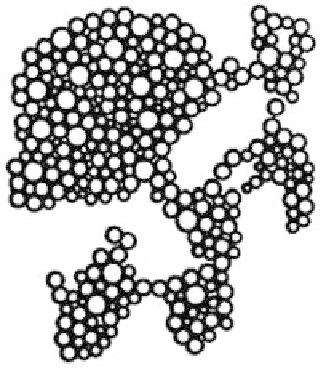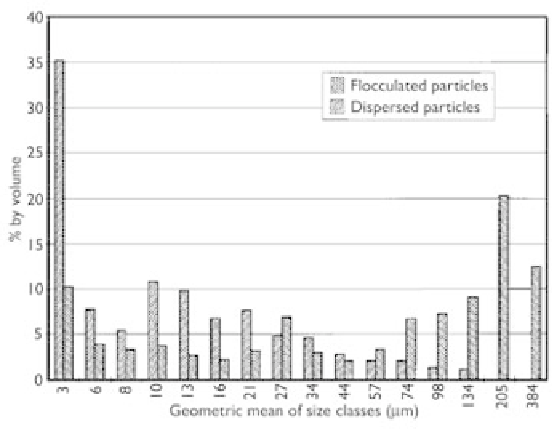Geoscience Reference
In-Depth Information
Figure 11.2
Schematic diagram of a typical floc (Tsai
et al
., 1987).
Flocs experience continuous aggregation and disaggregation during their transport.
Finer flocs and single particles may collide and then form larger flocs. On the other
hand, larger flocs may be disaggregated into finer flocs and single particles, due to
high shear or large eddy ejection and sweeping, in particular near the bottom. Under
given flow and sediment conditions, the flocculation and break-up processes may reach
an approximately equilibrium state. The typical size distribution of flocs is shown in
Fig. 11.3, as compared to that of the corresponding dispersed particles. One can see
that the flocs are much coarser than the dispersed particles on average.
Figure 11.3
Typical size distribution of flocs (Krishnappan, 2000).


